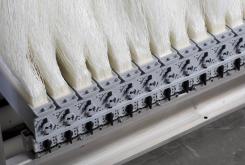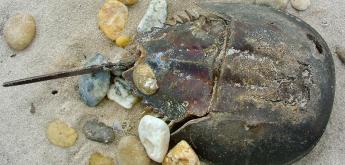A Glossary of Water Terminology

The water industry is full of acronyms and technical terms that can make it seem like you need a decoder ring to understand what people are talking about. Terms like BOD, TDS, RO, UF, MBR, and many more get thrown around in water technology and policy conversations.
For those new to the water space, this “alphabet soup” can be overwhelming and make it hard to follow or participate in discussions. Talking in acronyms and jargon also runs the risk of excluding those not already embedded in the industry.
At Veolia Water Technologies & Solutions, we want to demystify some of these common water acronyms and terms, opening up the knowledge base to a larger audience. We’ve included the top 25 common water acronyms and terms, breaking down the buzzwords into simple language so more people can join the conversation around water innovation and sustainability.
Common water industry acronyms and abbreviated terms
1. AD - anaerobic digestion: a biosolids treatment method that uses bacteria to transform organic waste into energy without oxygen.
2. AOP - advanced oxidation process: aqueous phase oxidation methods consisting of highly reactive species used in the oxidative destruction of target pollutants.
3. BET - bacterial endotoxin test: an in vitro assay that measures the endotoxins found in the outer membrane of the cell wall of Gram-negative bacteria.
4. BOD - biochemical oxygen demand: a measure of the oxygen consumed by microorganisms as they assimilate organics.
5. CIP - clean in place: an automated method of cleaning the inside of parts of a water processing system.
6. COD - chemical oxygen demand: a critical parameter used to measure the amount of organic pollutants present in wastewater.
7. DA - steam deaerator: thermal units used to remove oxygen from steam boiler feedwater by mixing low pressure steam with influent feedwater, allowing oxygen dissolved in water to be vented out.
8. DAF - dissolved air flotation: an effective clarification method for low-density solids that sedimentation cannot remove in applications such as drinking water, process water, and wastewater treatment.
9. DLE - direct lithium extraction: a modern process for mining lithium that is more cost-effective than the evaporation method, typically produces a higher lithium yield, and requires significantly less processing time.
10. EDI - electrodeionization: a process that removes residual salts and ionizable aqueous species — such as carbon dioxide, silica, ammonia, and boron — from water sources.
11. EDR - electrodialysis reversal: an alternative desalination technology that requires less pretreatment than reverse osmosis, while often providing a more robust and reliable operation.
12. FFS - film-forming substances: products that form a protective film on metal surfaces to protect against oxygen and carbon dioxide corrosion. These are commonly used to avoid corrosion in boiler systems.
13. GAC - granular activated carbon: generally an organic carbon filtration media used for water purification, typically applied in a fixed bed application. It can be used to treat common forms of PFAS, but treating PFAS requires a holistic approach.
14. HRSG - heat recovery steam generator: a boiler that recovers heat from a hot gas stream to generate steam for various applications, increasing energy efficiency.
15. IE/IX - ion exchange: a proven method of producing high-purity softened and demineralized water. It is used in most industries that require high-purity water and to reclaim water from processes.
16. MABR - membrane aerated biofilm reactor: an innovative technology that enables the upgrade of conventional activated sludge plants for nutrient removal and capacity expansion while significantly reducing the energy required for aeration.
17. MBR - membrane bioreactor: a method of separating water from treatment bacteria, which replaces a clarifier in a wastewater treatment facility.
18. MMF - multi-media filter: a type of filter bed graded by size and density, where coarse, less dense particles are at the top of the filter bed and fine, more dense particles are at the bottom.
19. NF - nanofiltration: a membrane designed to ensure a cut-off of around one nanometer.
20. PFAS - per- and poly- fluoroalkyl substances: widely spread, toxic compounds that are one of the top drinking water contaminant issues.
21. POTW - publicly owned treatment works: a treatment plant owned, and typically operated, by a government entity.
22. PPE - personal protective equipment: clothing and equipment, such as gloves, masks, and goggles, worn to minimize exposure to hazards.
23. RO - reverse osmosis: a separation process that uses a synthetic thin film polymeric membrane specifically engineered to allow water to pass through.
24. TDS - total dissolved solids: inorganic and organic substances in a water sample that need to be treated to achieve the quality of water desired. For example, coal combustion residuals must be treated for TDS.
25. TOC - total organic carbon: the measure of organic compounds in a water sample.
26. TSS - total suspended solids: visible substances in a water sample that need to be treated to achieve the quality of water desired. For example, coal combustion residuals must be treated for TSS.
27. UF - ultrafiltration: a treatment method that pushes water through a membrane and suspends particles but does not chemically alter the water.
28. UV - ultraviolet: a disinfection method that is environmentally safe and recognized as highly effective on a wide range of pathogens, including viruses.
29. WTP - water treatment plant: a facility, typically a drinking water plant for municipalities, that improves the quality of water for a specific purpose or to meet certain requirements.
30. WWTP - wastewater treatment plant: a facility designed to convert liquid wastes into an acceptable final effluent and to dispose of solids removed or generated during the process.
31. ZLD - zero liquid discharge: a system that ensures no industrial wastewater is discharged into the environment.







